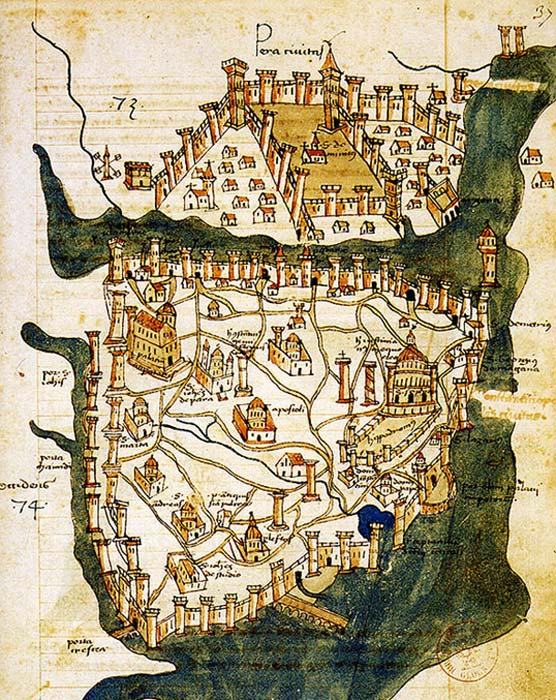
Orban’s Colossal Cannon: Holding a Tiger by the Tail – Part II
For 53 days, the forces of the Ottoman Empire shook what was left of the Eastern Roman Empire (known as Byzantium, or the Byzantine Empire) until they were able to breach the massive walls of Constantinople, conquering the last standing remnants of the once mighty Roman Empire.
Sultan Mehmed II was so pleased with Orban’s massive, destructive cannon that he wanted another twice its size! Orban headed back to his foundry in Edirne (Adrianople) acquiring more timber and bronze, and in three months he produced a twenty-seven-foot-long monster that had a diameter of 2.5 to three feet (76.2 to 91.44 cm) and could fire a stone projectile weighing between 1440-1500 lbs (653 – 680 kg).
Moreover, to make sure this weapon fire properly without exploding, the barrel was walled with eight inches (20 cm) of solid bronze to absorb the force of the blast. This massive weapon was finished in January 1453.
Citizens were warned in the surrounding area not to panic if they heard a loud boom:
“In January [the Sultan] decided to test the cannon which the Hungarian had made. It was carefully set in position before the main gateway leading into the palace [at Adrianople] which he had built that year, the ball was fitted into it, and its ration of powder weighed out. It was planned to fire it the next morning, and public announcements were made throughout Adrianople, to advising everyone of the loud and thunderous noise which it would make so that no one would be struck dumb by hearing the noise unexpectedly or any pregnant women miscarry. In the morning the gunpowder was lit, there was a great rush of hot air, and the shot was driven forth, leaving the cannon with a loud explosion which filled the air with clouds of smoke. The sound was heard a hundred stadia away, and the shot travelled a thousand paces from the point of firing, making a hole six feet deep at the point where it landed.”
Seeing potential in this new weapon, Mehmed ordered the production of more, but in smaller caliber. Once finished, the number of cannons produced was 14 large and 56 small; all of which would be used to batter the walls of Constantinople.
On the Move, Setting Up and Firing!
After the cannons had been tested and they were deemed ready for service, the Sultan Mehmed sent out the order to his officers to muster the forces and meet at the Ottoman capital of Edirne. The size of the Ottoman force that was to lay siege to Constantinople is uncertain. Some suggest the Ottoman army was 50,000–80,000 or 80,000-100,000 troops. Others say 120,000 and some go as high as 300,000 with 120,000 non-combatants in attendance.

Map of Constantinople (1422) by Florentine cartographer Cristoforo Buondelmonti is the oldest surviving map of the city, and the only one that predates the Turkish conquest of the city in 1453 (Public Domain)




